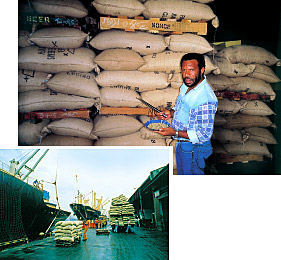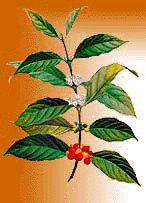 LALEnin KAHVE YETİŞTİRMEK SAYFASI
LALEnin KAHVE YETİŞTİRMEK SAYFASI
 LALEnin KAHVE YETİŞTİRMEK SAYFASI
LALEnin KAHVE YETİŞTİRMEK SAYFASI
kırmızı kiraztan yeşil çekirdeğe
![]()
Kahve fidanı, çok nazlı ve bakım isteyen bir bitkidir. Sürekli sıcağı olan bir iklim ister, ama aşırı güneşten hoşlanmaz; yaylaların serin iklimini beğenir, ama rüzgara dayanamaz; nemli havada çabuk gelişse de, çok nemli bir ortamda çabucak mahvolur. Yanı başında, kendisini hem güneşten, hem de rüzgardan koruyacak koca ağaçlar olmasını ister. (Cava adasında bu
ağaçlara Kahve Anası denmektedir.)
Arabica coffee plant takes about 5 years to mature and produce its first crop

kahve kemeri
the coffee plants grows in the Tropics, the area between capricorn and cancer.
Coffee has two main varieties: arabica and robusta.
Arabica is descended from the original Ethiopian coffee trees. The coffee made from this variety is mild and aromatic. It's the king of coffee and accounts for about 70 percent of the world's coffee production. These coffee trees grow best in higher altitudes, between 600 and 1,800 m. Mild temperatures (16 to 24 degrees Celsius) and about 150 cm of rain per year ensure arabica's growth. Heavy frost will kill arabica coffee trees
Robusta coffee trees represent about 30 percent of the world's market. The bean is smaller and rounder than an arabica bean. Robusta is a heartier plant and can withstand warmer temperatures, up to 29 C. It can also thrive at lower altitudes than arabica. Robusta beans produce a bitter-tasting coffee with about 50 percent more caffeine than arabica. You'll find robusta coffee trees in Southeast Asia and Brazil.
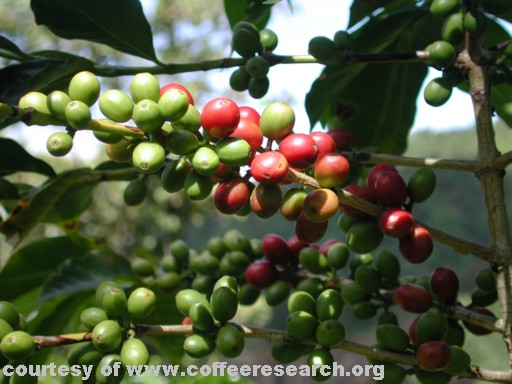
coffee berries start as green berries in early stage of growth, turns yellow, red, then dark crimson when it is finally ripe.

we say coffee beans although it comes from berries.
It's because each coffee berry has two beans
The skin of a coffee cherry is thick and bitter. However, the fruit beneath it is intensely sweet and has the texture of a grape. Next comes a slimy, honey-like layer, which helps protect the beans. The beans themselves are covered by a parchment-like envelope. This protects the two, bluish-green coffee beans, which are covered by yet another membrane, called the silver skin
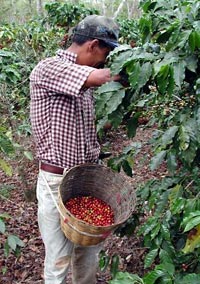
There is usually one coffee harvest per year. north of the equator, harvest takes place between September and March, and south of the equator between April and May. Coffee is generally harvested by hand, either by stripping all of the cherries off the branch at one time or by selective picking. The latter is more expensive and is only used for arabica beans
Coffee pickers can pick between 45 and 90 kg of coffee cherries per day. Only 20 percent of this weight is the actual bean
Once picked, the coffee cherries must be processed immediately. This is done in two ways:
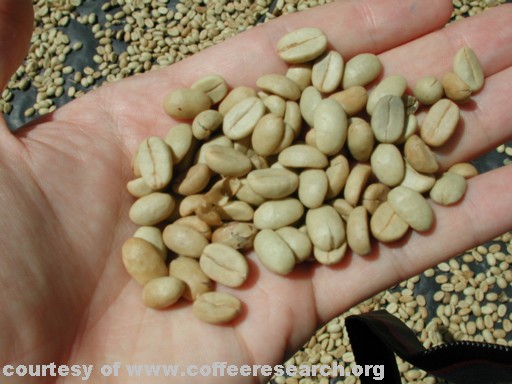
Coffee is shipped unroasted. This is called green coffee. Mostly it is stored in bags made of jute or sisal. About 7-million tons of green coffee are shipped worldwide each year
